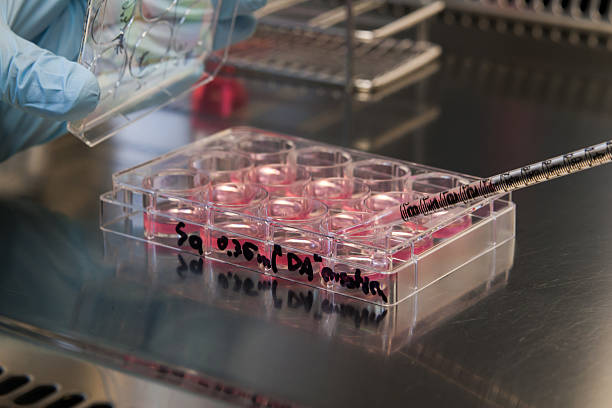Scientists at the CNRS and Inserm[1] have carried out experiments aimed at aggregating human embryo stem cells without external support, “solely by using magnets“. The aim is to assist regenerative medicine by creating thick or large areas of tissue, formed from cells, which can subsequently be altered “at leisure“. This “cohesive and organised cell structure” can also be “stimulated” to mimic the physical constraints affecting this tissue in vivo.
The French team, including Professor Menasché [2], magnetised human embryo stem cells “by incorporating magnetic nanoparticles to become genuine cell “Lego bricks” capable of being moved and folded using external magnets“. Then, in a “magnetic, tissue-stretching device, the magnetised cells are initially trapped using an initial micro-magnet. The aggregate formed by the cells is then trapped, in turn, by a second magnet, which is, however, mobile“. The moving magnets stretch or compress the tissue thus obtained.
In their study published in Nature Communications[3], the scientists state that the incorporation of nanoparticles did not affect the function of the stem cells nor their ability to differentiate. Furthermore, they showed that ‘magnetic beating’ mimicking contraction of the heart” has led to the differentiation of human embryo stem cells into cardiac cells.
[1] Matière Laboratory and complex systems (CNRS/ Paris Diderot), Biological Adaptation and Ageing Laboratory (CNRS/ UPMC), Paris Cardiovascular Research Centre (Inserm/Paris Descartes University).
[2] See Embryo research: the time has come for Professor Menasché to decide.
[3] A 3D magnetic tissue stretcher for remote mechanical control of embryonic stem cell differentiation. Vicard Du, Nathalie Luciani, Sophie Richard, Gaëtan Mary, Cyprien Gay, François Mazuel, Myriam Reffay, Philippe Menasché, Onnik Agbulut, Claire Wilhelm. Nature communications, 12 September 2017. DOI: 10.1038/s41467-017-00543-2.
CNRS (12/09/21017)

